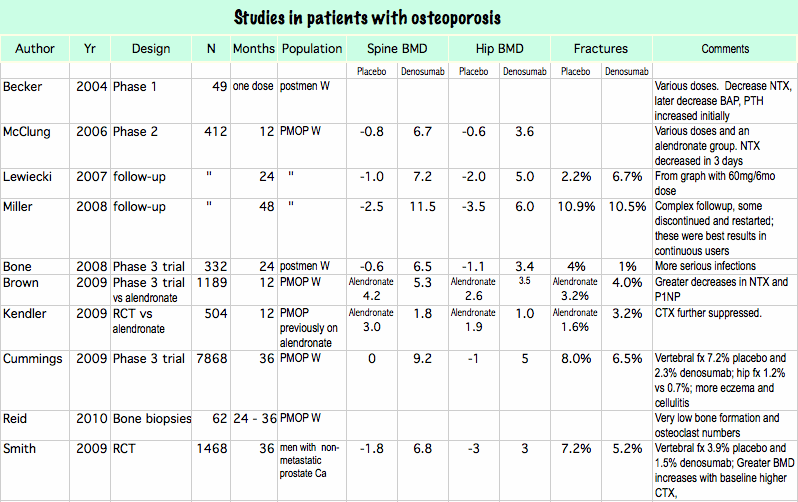
The following is a modification of bone remodeling (the complete version is on the physiology page). NOTE: the osteocytes have been shown to make RANKL in addition to the osteoblasts, and perhaps they are the most important cells in attracting osteoclasts. The animation has been corrected on the physiology page but not here yet.
First it shows origination of bone resorption on a trabecular surface. Then it shows what happens when there is denosumab in the area. Start by clicking the "continue" button.
This shows what happens to the bone. The first six months show bone turnover before giving a medicine. Then the denosumab is injected and immediately the bone resorption stops. In a few months the bone formation also stops. You can see bone turnover in other situations on the page about animations.
The mechanism of denosumab is very different from that of bisphosphonates, but the overall effect on bone turnover is similar. Neither drug is a "bone builder". The bone resorption stops and eventually the bone formation stops as well. Depending on the doses, denosumab is more potent than the bisphosphonates, and it stops bone resorption and formation almost completely. The serum markers (P1NP and CTX) decrease profoundly. In those with no tetracycline uptake, most have CTX below the limit of detection. This makes bone stronger because the resorption cavities that were present when the medicine is started will fill in with bone and there is no more loss of bone. In patients with severe osteoporosis, the resorption cavities cause structural weakness. This is probably why fracture incidence is lower when patients are treated with denosumab.
However, there is concern that after prolonged use (perhaps greater than 5 years, which is the average time it takes for a normal skeleton to remodel) the bones could become brittle. We still do not know the long-term effects of bisphosphonates and we certainly do not know the long-term effects of this new drug. Therefore, it should not be used in an attempt to prevent osteoporosis.
One major difference between denosumab and the bisphosphonates is that denosumab will stop working after about 6 months, but the bisphosphonates deposit in the bone and accumulate with a half-life greater than ten years. There is no way to eliminate bisphosphonates from the bones, but the denosumab is an antibody that will eventually disappear. This makes denosumab a good choice if there is a temporary reason for increased bone resorption. The best example would be treatment with aromatase inhibitors,and one study has shown benefits of denosumab in this clinical situation (Ellis GK).

The table shows percent change since baseline for bone density
Updated 7/19/2010 with note added 5/8/2016

